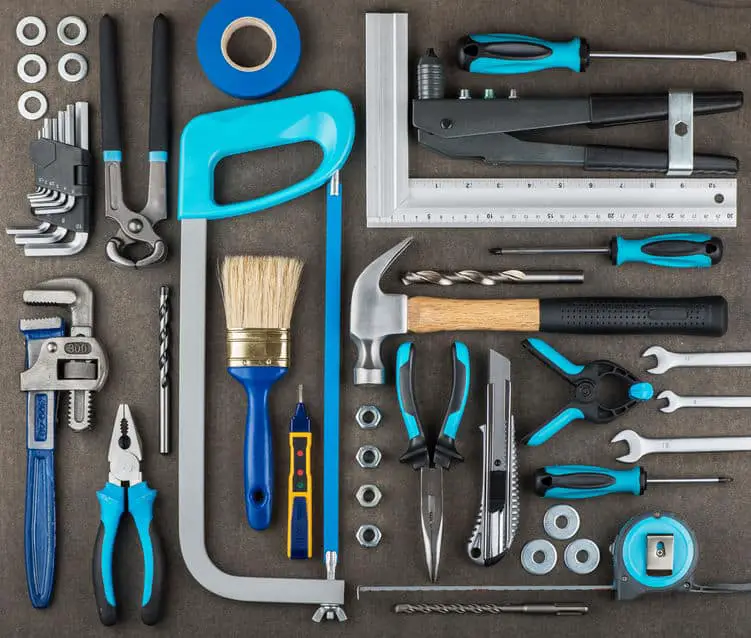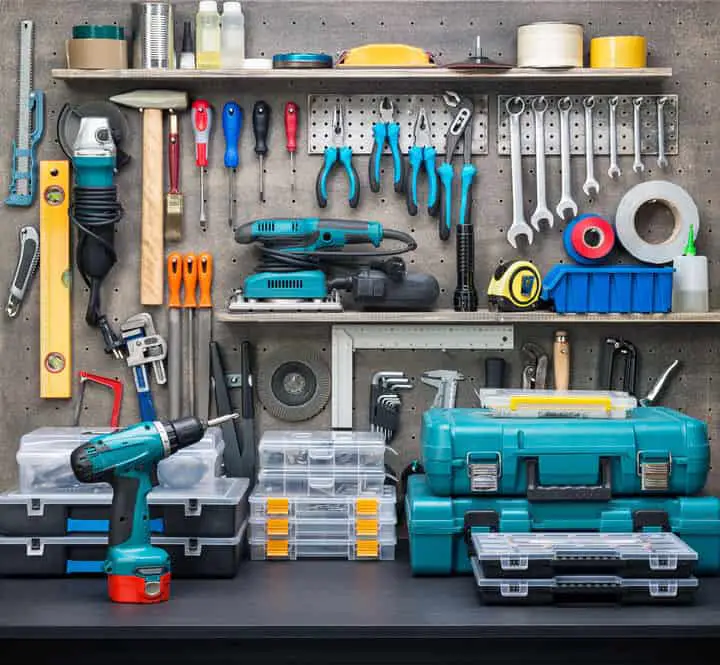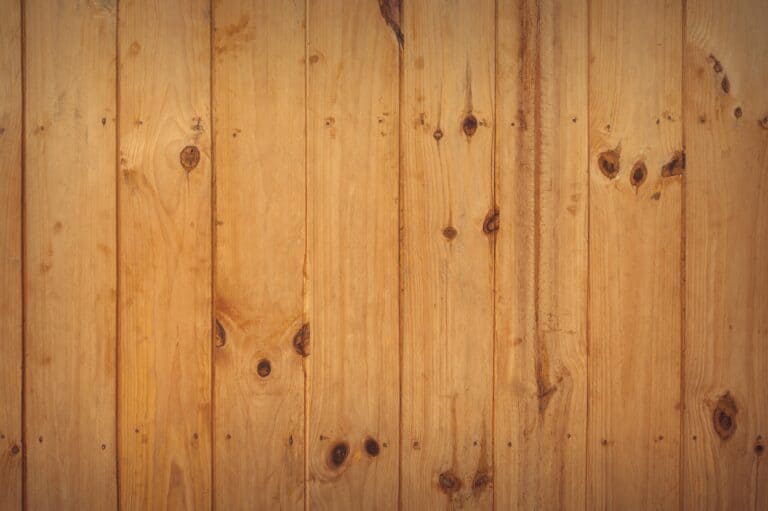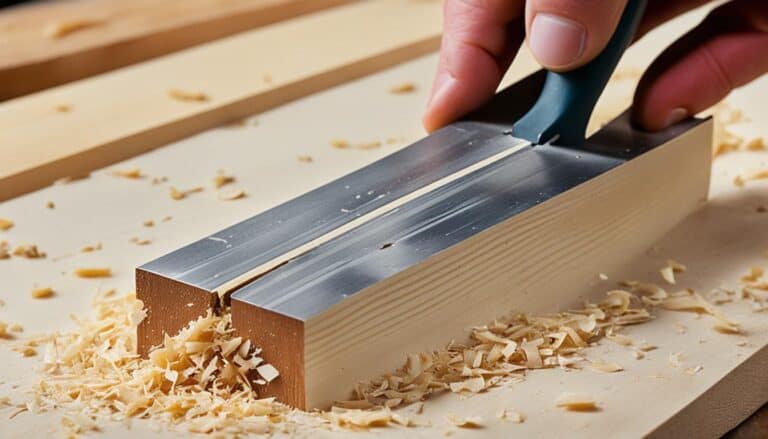Why would you wax your woodworking tools? Waxing your woodworking tools can provide a more slick and safe surface for operating your woodworking tools. I was looking for better ways to take care of my tools and found using wax was a good way to help.
Using wax, more specifically using paste wax for table saw, band saw, joiner makes the iron cast surface slick and easier for wood to pass through your woodworking tool. If used correctly, it will also enhance the longevity of the surface protecting from rust and marks which will damage the woodworking tool and the wood used on them.
Applying the wax paste to your woodworking tools will save time, effort, and money. That is a good thing. However, what kind of paste wax and how to apply it. I wanted to provide you what I found in my research to help you properly apply wax to your woodworking tools. Let’s get started.
Why Do You Need To Use Wax On Woodworking Tools

If you have a wood shop full of hand and power tools you know there is one common enemy which works 24 hours a day on your tools. It is moisture, rust, and corrosion. It will make your tools very difficult to work with and basically useless.
What can you do about this and help prevent your expensive woodworking tools from moisture? There is a solution and it is maintenance and part of this maintenance should include wax. You can perform this maintenance annually or bi-annually such as in spring or fall. If you are in an area that has more moisture you will need to possibly go to a quarterly schedule.
Where Does The Moisture Come From
If your climate where you live has a lot of moisture in the air this will also need to be considered. This can be problematic for your woodshop as all the items in your woodshop will share an amount of moisture.
To provide an example, if you have a hot or warm sunny day and you have a glass with a cold drink you most likely have noticed the moisture forming on the outside of the glass.
If you think about it this is the identical process with your woodshop. If the temperature is warm during the day and cools down in the evening the moisture is still in the air in your woodshop. Since the woodshop has walls, a roof, and basically is closed in the moisture has nowhere to go. Due to the moisture in the air in your woodshop, it will allow condensation to form on your wood-making tools.
Protecting Your Woodworking Tools – How To Keep Tools From Rusting
Now that we know what causes the rust and corrosion how do we prevent and protect your woodworking tools? There are a few options to consider without spending a lot of money to install a large HVAC system in your woodshop.
- You can install a small heater to heat your wood shop during the change of weather. Unfortunately this will need to be monitored and can get very expensive.
- You can put all of your woodworking tools in a protective area such as a sealed box (tool chest for for example) or a cloth bag. This will provide a layer for the moisture to collect on other than your woodworking tools.
This option is feasible, however not always for your larger woodworking tools such as table saws, band saws, etc. - The most viable option is to combine these. If you are able to use a heater when drastic weather is in your area that will help. Additionally, you can place your small woodworking tools in bags or your tool chest. But the bigger woodworking tools need to have protection.
This is where the wax being applied to the iron cast plates, either vertical or horizontal can protect your woodworking tool investment.
What Types Of Paste Wax And Liquid Wax Can I Use On Woodworking Tools

I have seen many different opinions in forums and websites which point to wax paste. Other opinions have ranged from furniture polish to WD-40. I can tell you from my experience personally I have been good with a wax paste which is used for wood. It reduces friction between the wood and the cast iron plates on woodworking tools.
The reason wax paste for wood is better is due to the fact that the wax paste used for cars and trucks typically contains silicone. This provides a better shine for your vehicle but is not good for your woodworking tools.
Here is a list of the available wood waxes and information that will help you in your decision.
Wax | Consistency Type |
|---|---|
| Minwax Paste | Paste |
| Carnauba Paste Wax | Paste |
| Watco Finishing | Liquid |
Minwax Paste Wax- The Minwax paste works very well and due it being a paste it is easy to apply to different surfaces either vertical or horizontal. It provides a smooth to the touch finish, spreads evenly, and buffs off easily. Lastly, it dries very quickly which is a bonus.
Carnauba Paste Wax – The very high content of carnauba in this wax makes it easy to achieve a slick and shiny surface that you can pass your wood over when using your woodworking tools. It doesn’t leave any discoloration on your woodworking tools. Dries quickly and is easy to buff with a little amount applied.
Watco Finishing – Although a liquid this thick wax works very well and applies to the woodworking tools very even and easily. It is very durable and is resistant to water. It is a completely clear wax that fills any marks which may be on the surface of your woodworking tools which makes it an excellent choice.
Choosing the best wax to use on your woodworking tools is an important decision from the perspective of cost, durability, and how long will it last before you will need to apply the next coat.
If you are using rough unfinished wood you may need to consider checking more often to ensure the wax is holding up. If not then you may need to consider another wood wax paste for your woodworking tools surfaces.
How To Apply Wax To Woodworking Tools
Applying the wax to your woodworking tools is an easy process. The same process applies to all the woodworking tools you will use. The items you will need are below:
- Wax
- Couple of cotton rags
- Real fine grit sand paper (If needed)
If your woodworking tool has a heavy or light rusty surface you will need to remove the rust prior to applying the wax.
- Clear any debris and dust with a vacuum.
- Wipe off any remaining dust
- Lightly sand using the appropriate grit sand paper to get the rust cleaned off
- Wipe off with the cloth to get any fine dust removed
Apply Wax To Woodworking Tools
Take a clean cloth and scoop out a small amount of wax. Then apply to your woodworking tools in a small amount in a circular motion. Please note do not apply a thick layer but a thin layer a few times. Wipe off any excess and buff with another clean cloth.
What Woodworking Tools Do You Use Paste Wax On

If you are a woodworker you have very diverse woodworking tools which you use on a daily or every so often basis. I wanted to provide a general list of tools that you can use wax to your advantage for better use of your woodworking tool, the longevity of the woodworking tool, and protecting the wood you are using on the woodworking tool.
Wood Routers – I was surprised to see that not many folks discuss applying wax to the bottom plate of a wood router. As you know the bottom of the router slides along the wood as the router removes the material with the bit. The bottom of the plate which comes in contact with the wood is where you can apply wax.
Applying paste wax to the bottom plate of the wood router allows for it to travel easily across the wood and makes for an easier routing experience as well as easier on the wood and router.
The videos below show the way of applying the wax to the bottom of the router. He uses wax paper versus paste however it explains well.
Planer Sole – If you use a hand planer or power planer you know the surface of the planer needs to be smooth to glide over the wood. Especially if you are taking off small slivers of wood and don’t want to gouge the wood which would be devastating depending on what you are working on for your client.
Applying wax to the sole of the planer is simple and easy. I provided a video below to help you see this in action.
Table Saw – Using paste wax for table saw – The table saw is the pivotal tool for most woodworkers and generally if you want a good one, also the most expensive purchase in your woodshop. Taking good care of this woodworking tool is important.
Along with your other table saw maintenance you should be using paste wax for table saw, performing you need to apply wax to the table and the runners. This will allow for ease of use for gliding your wood across the table (safety) and also allow your jig with runners to run evenly and easier across the table.
Below I have included a video to explain and show you how to apply wax to your table saw.
Band Saw – The band Saw is used by many woodworkers to do custom cuts. It is a very versatile tool. Waxing the plate and the blade is important and will definitely benefit you by allowing the wood to easily move along the bottom plate as well on the blade.
I have included the below video to show you how to wax the blade. It benefits you to wax the blade whether you are cutting wood or metal.
Joiner – If you have a joiner in your woodshop you know the importance of keeping up with the maintenance to ensure it is working safely and properly to get the best wood product and smooth finishes. Besides the blades, you need to ensure you protect and use the plates on the horizontal side as well as the vertical side.
As mentioned above you will want to use a paste wax to allow the wood to travel smoothly and evenly across the blades providing that smooth finish.
Conclusion
Protecting your woodworking tools is maintenance which you will need to stay on top of. Moisture is definitely not the friend of woodworking tools and can render your woodworking tools useless.
A little maintenance goes a long way to ensuring the investment you put into your woodworking tools is available and working for you when you need them.












